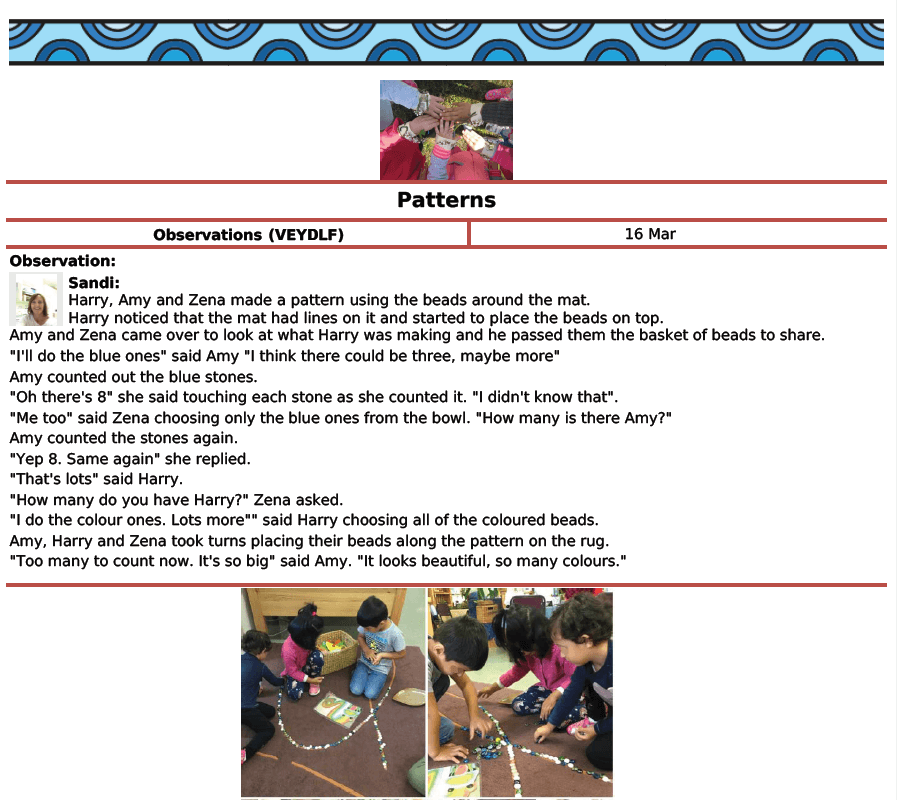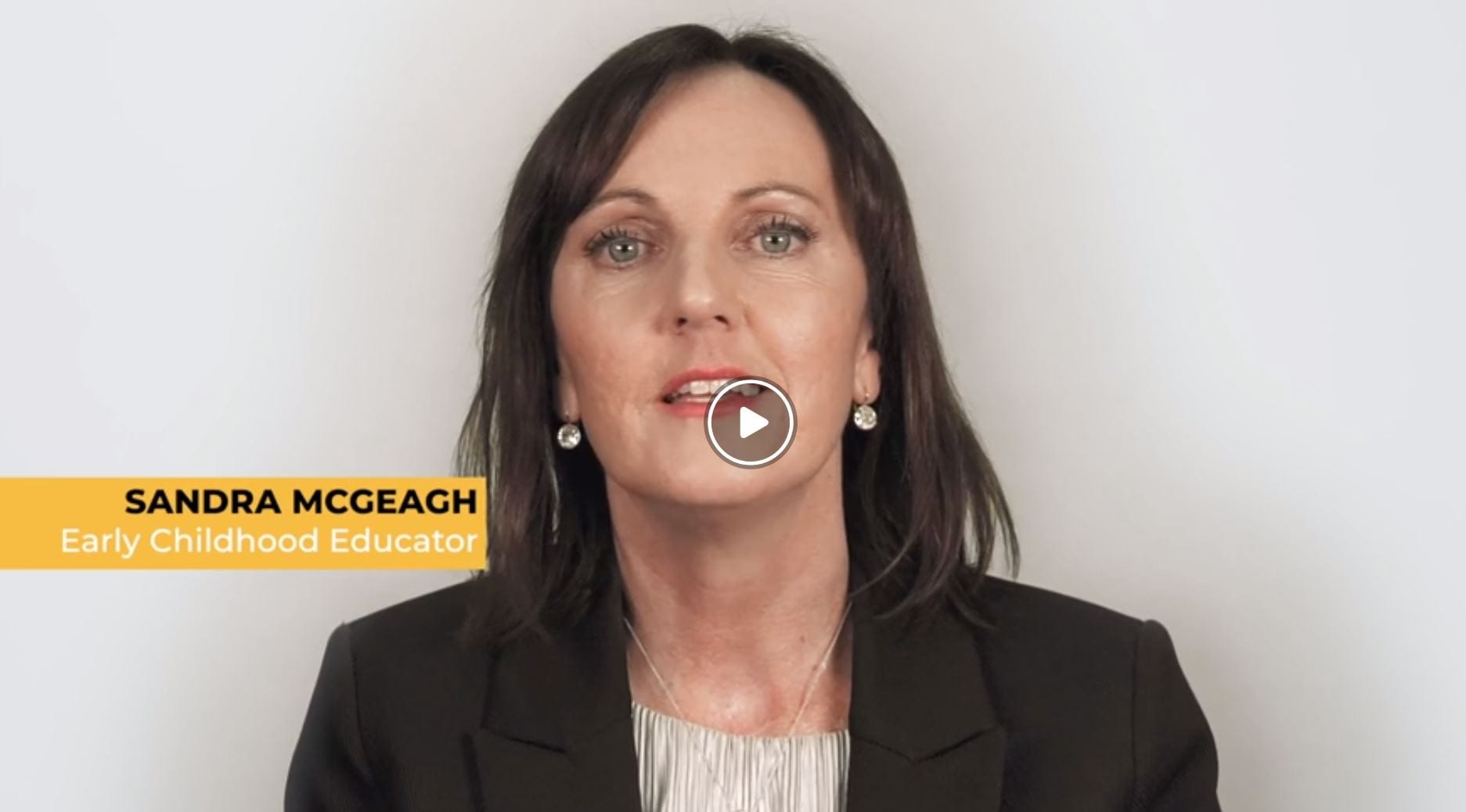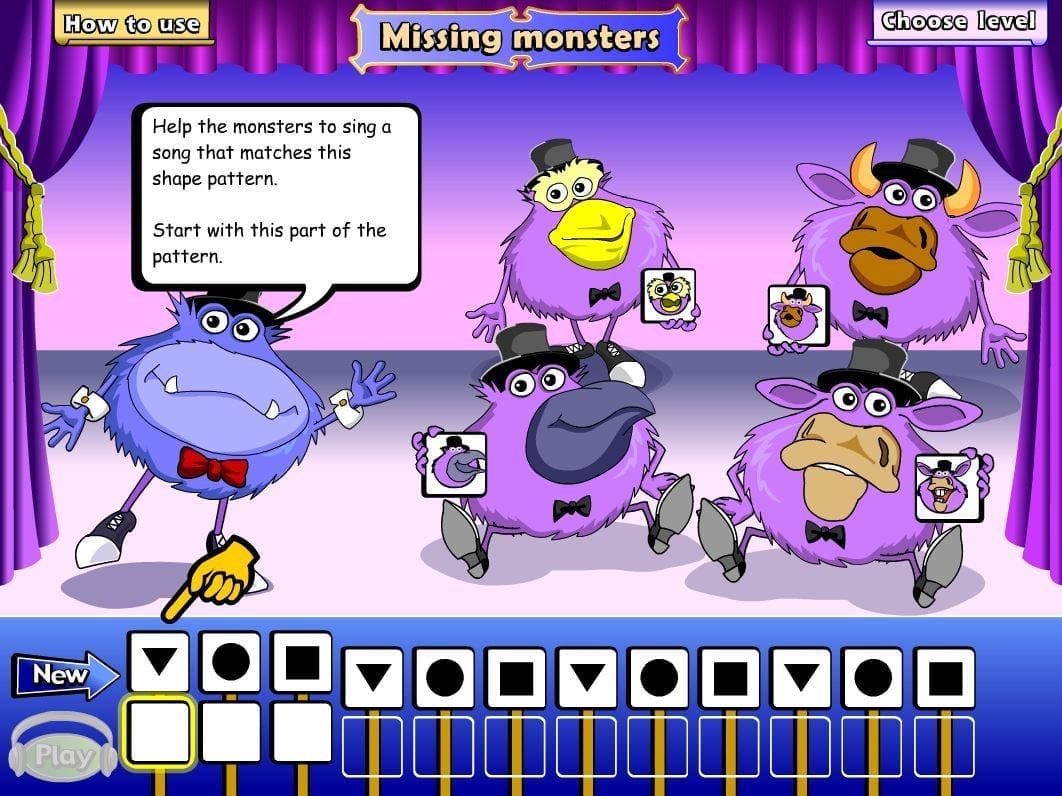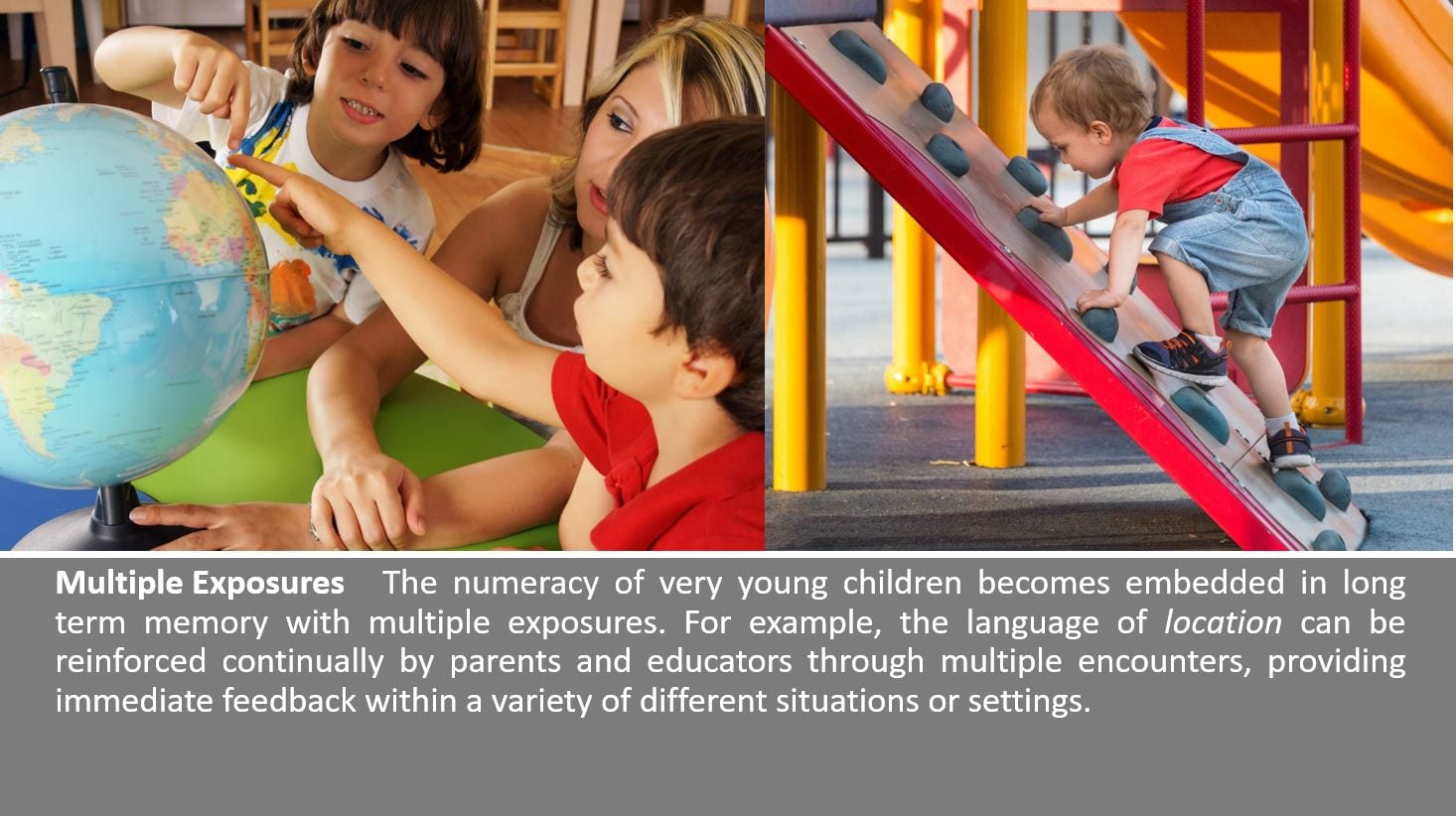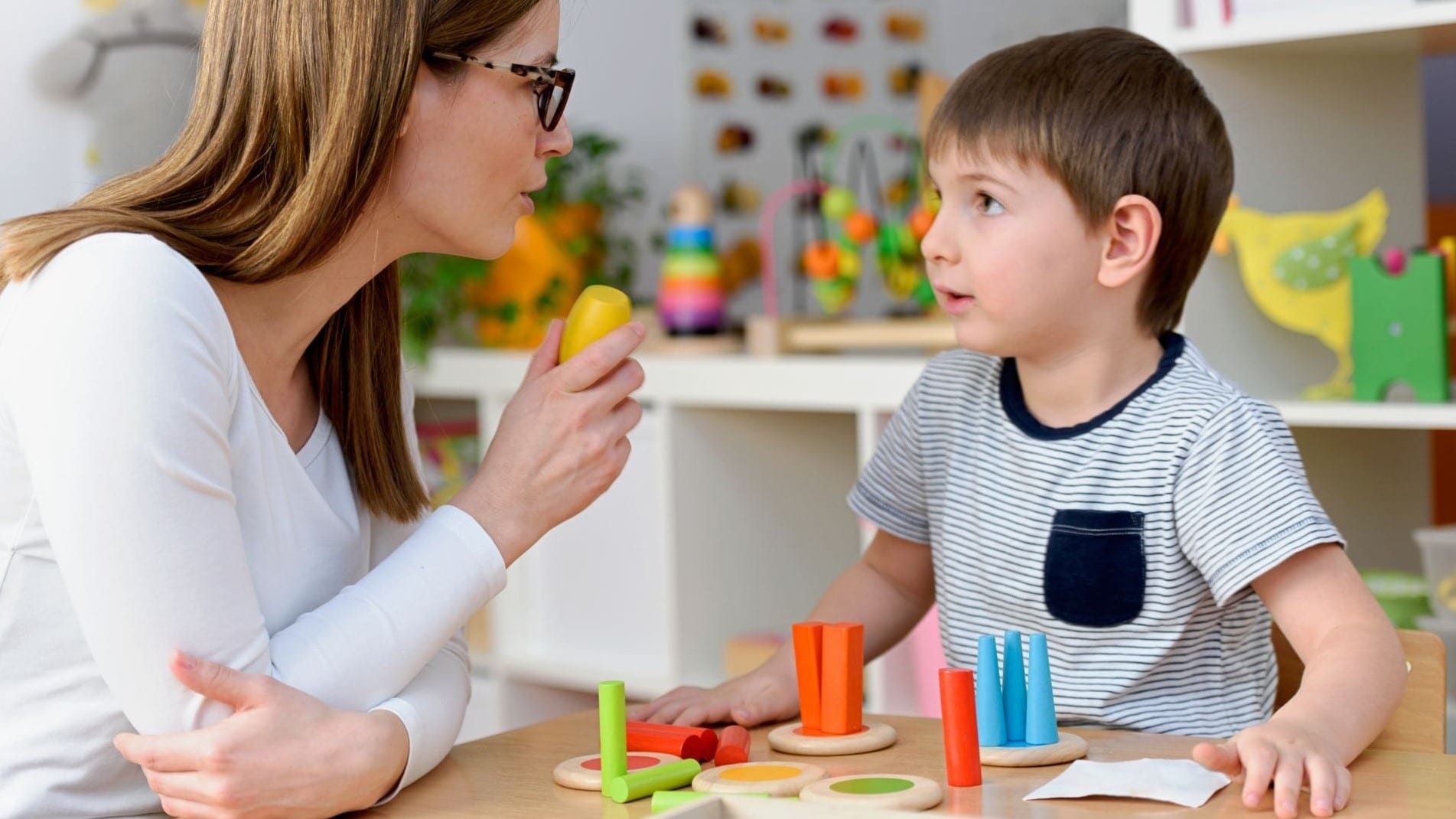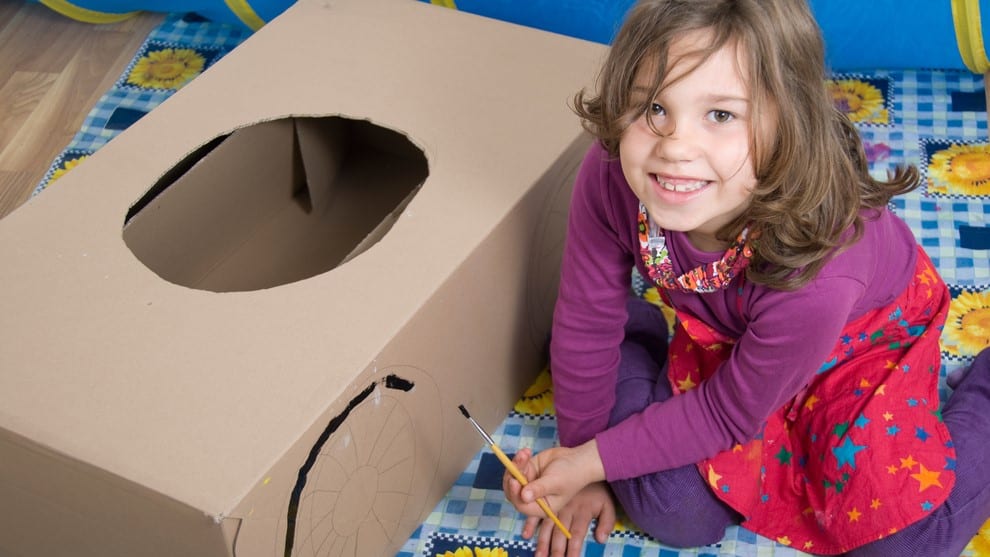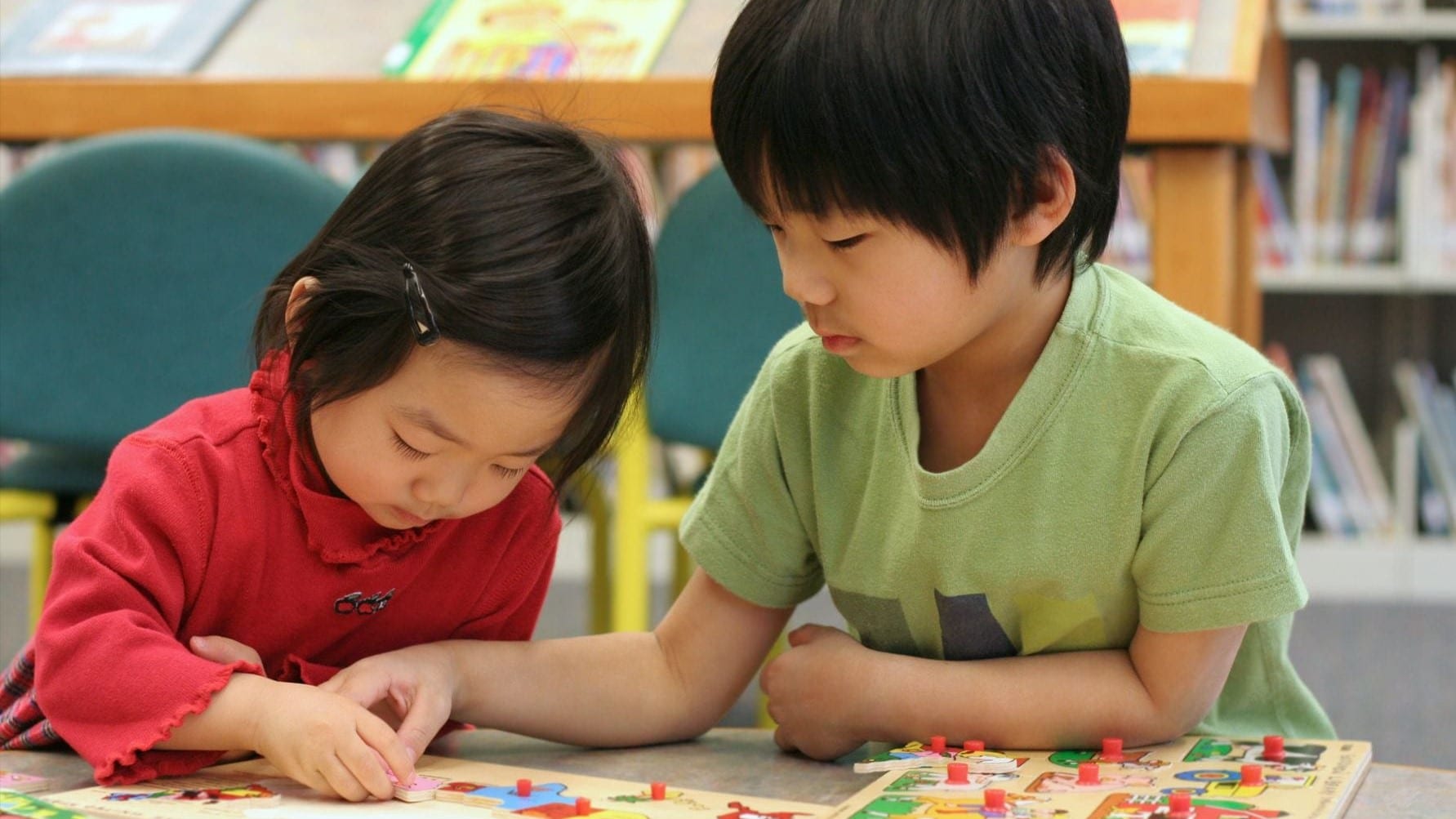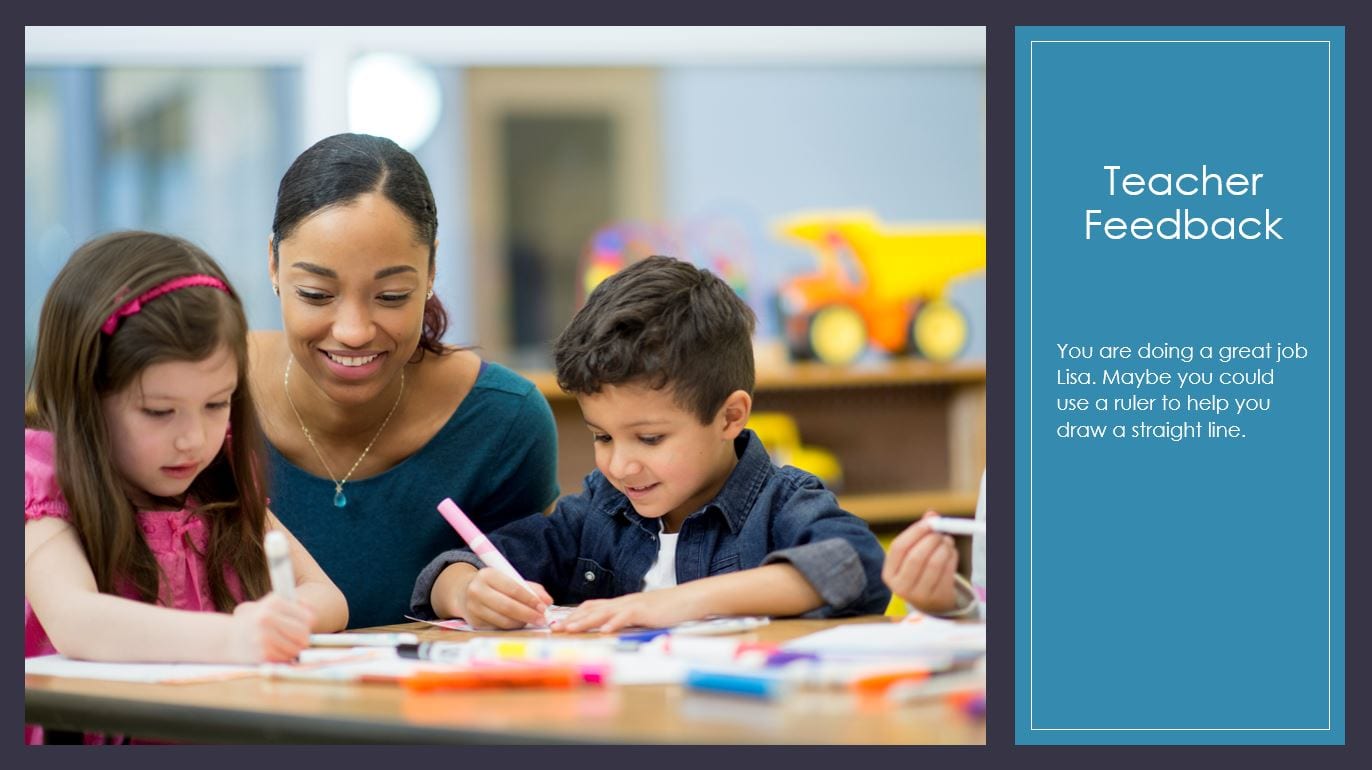Use the ‘dots’ or floating menu on the right of your screen to navigate this page.
Setting Goals
Clear learning intentions and goals clarify what success looks like
Preschool numeracy plan
Numeracy Focus: Developing number sense; Exploring patterns and relationships
Learning area: VEYLDF: Learning, Identity and Communication, Victorian Curriculum: Mathematics
Numeracy learning goals must be based on children’s needs and provide a challenge for all children. Children know what is expected of them and how to achieve
This preschool numeracy plan demonstrates how a kindergarten teacher uses observations of the children’s numeracy learning to assess where the children are at and to plan future goals.
Sandi established that the children are making patterns, counting, and describing the attributes of objects. Based on this assessment, Sandi sets goals to further the children’s numeracy development by building on their interest in patterns.
She will encourage the children to explore other
Examine this lesson plan to observe how evaluated observations are used to set effective numeracy goals.
Reflective Prompt
As a parent or early years educator, how might you promote young children’s understanding of number sense while also fostering children’s problem solving through co-establishing learning goals?
Reflective Prompt
As a parent or early years educator, how might you promote young children’s understanding of number sense while also fostering children’s problem solving through co-establishing learning goals?
Key elements of Setting Goals
- Based on
assessed needs of the learner - Goals are presented clearly so students know what they are intended to learn
- Can focus on surface and/or deep learning
- Challenges learners relative to their current mastery of the topic
- Links to explicit assessment criteria
Further resources
Advice from the Community Early Learning Australia on how to set goals and the types of goals to set. Explore this Goal Setting resource
VEYLDF Learning Outcome Planning Cycle Resource. A detailed document introducing and describing the Early Years Planning Cycle with examples of sample learning plans. Use the VEYLDF Learning Outcome Planning Cycle resource
VEYLDF Communication Outcome Planning Cycle Resource. A detailed document introducing and describing the Early Years Planning Cycle with examples of sample learning plans. The most relevant plans are:
- Puzzle
- Waving
- Up I go
- Hats
- Shells
Delve into these sample learning plans
Early childhood planning examples. Ideas and inspiration for creating learning plans. Learn more about these planning examples
Structuring Lessons
A lesson structure maps teaching and learning that occurs in class
Insights from an experienced kindergarten teacher
Numeracy Focus: All
Learning area: VEYLDF: Learning, Victorian Curriculum: Mathematics
Through the classroom structure and routines described by Sandi, it can be seen how the children’s numeracy learning is scaffolded and enhanced. Educators
The lesson objectives are embedded in the activities prepared for the children, and the sequencing of numeracy activities is made apparent to them through stimulus materials or provocation.
Kindergarten environments are created with many learning spaces to enhance learning. The learning environment is set up so children easily have access to materials to foster their numeracy learning.
Structured lessons and routines enhance children’s numeracy by making the learning objectives clear. Smooth transitions influence the climate and
Watch the videos below, where Sandi talks about scaffolding children’s numeracy learning through structure and routines.
Reflective Prompt
Reflect on the same questions Sandi was asked in her interview, how would you respond?
How are lesson objectives communicated to the children?
How is the children’s numeracy scaffolded through the structure of the routine and/or classroom?
How is numeracy embedded in your daily practice?
How do you ensure children have access to visual aids or materials to assist with their learning?
How do children transition from one activity to the next?
Reflective Prompt
Reflect on the same questions Sandi was asked in her interview, how would you respond?
How are lesson objectives communicated to the children?
How is the children’s numeracy scaffolded through the structure of the routine and/or classroom?
How is numeracy embedded in your daily practice?
How do you ensure children have access to visual aids or materials to assist with their learning?
How do children transition from one activity to the next?
Key elements of Structuring Lessons
- Clear expectations
- Sequencing and linking learning
- Clear instructions
- Clear transitions
- Scaffolding
- Questioning/feedback
- Formative assessment
- Exit cards
Watch the videos below, where Sandi talks about scaffolding children’s numeracy learning through structure and routines.
Sandi McGeagh, an experienced kindergarten teacher, was asked to reflect on her own practice and how she structures lessons for children in her setting. Listen to the interviews with Sandi and consider how Sandi’s experience is similar or different
Sandi embeds numeracy into her teaching activities. Listen to the real experiences that Sandi draws on to enhance children’s numeracy. How is numeracy embedded in your daily practice?
Notice the materials and activities that Sandi suggests for fostering numeracy when asked, “How is children’s numeracy learning scaffolded through structures of routine and/or classroom?” See further examples of how to enhance numeracy with young children
Kindergarten environments offer tactile engagement with numeracy through learning spaces. Sandi shares the provocations that she structures into her planning of the kindergarten setting. How do you ensure children have access to visual aids or materials to assist with their learning?
Transitioning from one activity to the next is driven by the children’s interests. Sandi draws on questioning, visual aids, and materials to enhance and structure the numeracy experience. How do children transition from one activity to the next?
Explicit Teaching
Explicit teaching practices show students what to do and how to do it
Counting spoons
Numeracy Focus: Number sense
Learning area: VEYLDF: Learning and Communication, Victorian Curriculum: Mathematics
This video exemplifies the use of explicit teaching for counting during a whole group preschool numeracy lesson. The kindergarten teacher models one way to quantify a set by touching each object as she counts. She deliberately miscounts to encourage the children to vocalise and consider the principles of counting. The children are explicitly shown how to compare two sets of spoons.
Explicit numeracy teaching practices are demonstrated when learning intentions are clearly stated to children at the beginning of the lesson.
Teachers model expectations via worked examples, demonstrations and specific prompts.
Prompts are systematic and sequential. Using a series of steps directly supports guided practice.
The teacher continually checks for understanding while offering opportunities for children to demonstrate and practice their new numeracy learning.
Observe the teacher using the familiar context of spoons to teach explicitly counting, one-to-one correspondence, and comparing the size of sets Source: Queensland Curriculum and Assessment Authority
Reflective Prompt
How did this teacher explicitly introduce and explore new content?
How do you share learning intentions and use worked examples to support independent practice?
Reflective Prompt
How did this teacher explicitly introduce and explore new content?
How do you share learning intentions and use worked examples to support independent practice?
Key elements of Explicit Teaching
- Shared learning intentions
- Relevant content and activities
- New content is explicitly introduced and explored
- Teacher models application of knowledge and skills
- Worked examples support independent practice
- Practice and feedback loops uncover and address misunderstandings
Further resources
This American video from the Connecticut Office of Early Childhood describes children’s recognition of total quantity (cardinality). Early childhood professionals model how they explicitly teach this skill and support its development through daily routines and play. More videos exploring numeracy development are located on this site. Watch the video
Worked Examples
Worked examples demonstrate the steps required to complete a task or solve a problem
Monster choir
Numeracy focus: Patterns and relationships
Learning area: VEYLDF: Learning, and Communication, Victorian Curriculum: Mathematics
Children’s numeracy is enhanced when they recognise and understand relationships and patterns in their everyday lives. In playing Monster Choir the child is expected to contribute to the pattern making gradually, with the challenge increased so the child can practice each newly learned skill. Once the child has mastered each step they will be ready to produce their own sound pattern.
This numeracy activity begins by describing a pattern as same, same, different, with a demonstration using shapes. Next, the same, same, different sequence is visualised and enhanced with monster sounds. A sound sequence is revealed with missing parts to complete. The final steps are to create a personalised monster sound pattern and then to apply this understanding in other situations.
Small, bite-sized worked examples reduce the cognitive load so the child can focus on the process. Immediate feedback is provided at each stage. As witnessed in this dynamic activity, being numerate in creating and following patterns is beneficial when engaging in a music and dance context.
Monster Choir is an online interactive activity focused on children creating sound patterns through scaffolded numeracy worked examples
Reflective Prompt
How are you currently scaffolding new knowledge and skills in worked examples?
Reflective Prompt
How are you currently scaffolding new knowledge and skills in worked examples?
Key elements of Worked Examples
- Teacher clarifies the learning objective, then demonstrates what students need to do to acquire new knowledge and master new skills
- Teacher presents steps required to arrive at the solution so students’ cognitive load is reduced and they can focus on the process
- Students practice independently using the worked example as a model
Further resources
This video models how to model eight in a variety of ways. The accompanying questions invite further exploration of eight and other numbers. View the Eightness of Eight video
Collaborative Learning
Students work in small groups and everyone contributes to learning tasks
Puddle Fun
Numeracy focus: Understanding, estimating, and using measurement, Understanding and using geometric properties and spatial reasoning
Learning area: VEYLDF: Learning and Communication, Victorian Curriculum: Mathematics
Sandi’s kindergarten children challenged themselves to solve how to cross a puddle in a local park without getting their feet wet. The children planned together and drew maps to plot out their approach to the problem. Returning to the park the children gathered and measured materials whilst collaborating to build the bridge. Educators scaffolded the children’s numeracy learning during this exciting collaborative exercise.
Collaborative learning of numeracy involves teachers promoting interactions between children to solve problems. It is not students simply working side by side.
Team building skills are taught explicitly so that children learn how to work together and negotiate within group activities. Each member has a role to play within the group and children learn how to provide feedback to each other to achieve numeracy learning goals.
Watch the video of Sandi, a kindergarten teacher, describing her children engaged cooperatively in designing a bridge to cross a puddle. Notice how Sandi draws on this incidental opportunity to fostering collaborative learning.
Reflective Prompt
What does this kindergarten teacher do and say to foster collaborative learning?
What opportunities for collaborative learning have you noticed and fostered this week in your educational setting?
How have you assigned roles within groups as part of your protocols and classroom culture?
Reflective Prompt
What does this kindergarten teacher do and say to foster collaborative learning?
What opportunities for collaborative learning have you noticed and fostered this week in your educational setting?
How have you assigned roles within groups as part of your protocols and classroom culture?
Key elements of Collaborative Learning
- Students work together to apply previously acquired knowledge
- Students cooperatively solve problems using previously acquired knowledge and skills
- Students work in groups that foster peer learning
- Groups of students compete against each other
Further resources
An example of curriculum planning at the unit level for Science level 2. The purpose of curriculum planning is to document teaching and learning plans to support a progression of learning. Explore the Lesson Layer Science Level 2
In this block play video, the teacher is working with two young children who have planned an activity and recorded it in their journals. The teacher notices Liam and Chiara have planned to do the same activity. She fosters collaborative learning by inviting them to share their plans and talk about how they can work together. Source: Queensland Curriculum and Assessment Authority
Watch the block play video to see how the teacher facilitates collaborative learning
Multiple Exposures
Students are given multiple opportunities to encounter, engage with and elaborate on new knowledge and skills
The Language of Location
Numeracy Focus: Understanding and using geometric properties and spatial reasoning
Learning area: VEYLDF: Learning and Communication, Victorian Curriculum: Mathematics
The numeracy of very young children becomes embedded into long term memory with multiple exposures. Deep learning develops over time through many experiences that are varied. Children require many opportunities to engage with, and elaborate on new knowledge and skills. Different activities, scaffolded over several days helps promote a deeper numeracy understanding.
This presentation demonstrates how the language of location can be reinforced continually through a variety of situations that children encounter daily in their interactions with parents and early childhood educators. These experiences are very different, yet each provides an opportunity to reinforce the language of location.
There are many occasions for the children to hear and use the words, and follow directions involving location language. These multiple exposures provide feedback and allows the children’s numeracy learning to be enhanced and embedded into their expanding repertoire of skills and knowledge.
View this presentation to see how multiple exposures within a variety of settings can enhance preschool children’s understanding of location
Reflective Prompt
This resource provides examples of how educators and parents can reinforce the language of location to promote students understanding of using geometric properties and spatial reasoning.
Can you think of how you might use music and movement to promote students understanding of using geometric properties and spatial reasoning?
Reflective Prompt
This resource provides examples of how educators and parents can reinforce the language of location to promote students understanding of using geometric properties and spatial reasoning.
Can you think of how you might use music and movement to promote students understanding of using geometric properties and spatial reasoning?
Key elements of Multiple Exposures
- Students have time to practice what they have learnt
- Timely feedback provides opportunities for immediate correction and improvement
Further resources
This video describes children’s ability to notice and describe the attributes of objects. Learn more about Supporting Mathematical Development in Young Children – Measurement
Questioning
Questioning engages students, stimulates interest and curiosity in the learning, and makes links to students’ lives
Probing questions
Numeracy Focus: Developing number sense; Understanding and using geometric properties and spatial reasoning
Learning area: VEYLDF: Learning and Communication, Victorian Curriculum: Mathematics
These images portray effective probing questions to foster numeracy. Questioning offers opportunities for children to express opinions, discuss points of view, and reflect on their numeracy learning, which provides immediate feedback on children’s progress.
Children’s numeracy development is enhanced and extended through effective open-ended questioning. Questioning probes children’s numeracy thinking, invokes curiosity and stimulates interest. Questions should link to children’s lives. Children need to feel free to ask questions to clarify their understanding and respectfully challenge others’ ideas.
Carefully planned questions encourage children’s provocative thinking and reasoning. The types of questions a teacher utilises depends upon the learning goal, and fall into one of these categories:
- Finding out and clarifying
- Scaffolding understanding
- Encouraging generalisations
- Specialising and exemplifying
- Altering and verifying.
Scroll down to find probing questions to develop and extend children’s numeracy
Reflective Prompt
What kinds of questions will you ask young children to support their numeracy fluency and encourage reasoning?
Reflective Prompt
What kinds of questions will you ask young children to support their numeracy fluency and encourage reasoning?
Key elements of Questioning
- Plan questions in advance for probing, extending, revising and reflecting
- Teachers use open questions
- Questions used as an immediate source of feedback to track progress/understanding
- Cold call and strategic sampling are commonly used questioning strategies
Consider how the probing questions relating to the images below develop and extend children’s numeracy
1. Finding out and clarifying
Educator: ‘Great thinking! How did you work that out?’
3. Encouraging generalisations
Educator: ‘How many other ways could you do that?’ ‘Could you use it at home?”
5. Altering and verifying
Educator: ‘What would happen if we dug a hole on this side?’
2. Scaffolding understanding
Educator: ‘Convince me that you have found all of the combinations of people?’
4. Specialising and exemplifying
Educator: ‘Can you show me another example of how you could make the number 10?
5. Altering and verifying
Child: ‘I wonder how long ago these dinosaurs lived on earth?’
5. Altering and verifying
Child on the right: ‘I think this piece goes here.’
Further resources
The Aussie Childcare Network has advice on how to ask open-ended questions that challenge children’s thinking. Learn more about using open-ended questions with children
A newsletter by Early Childhood Australia with tips on how create an environment for sustained shared conversations. Read more about sustained, shared thinking
A three page information sheet providing strategies and advice about effective questioning. Explore effective questioning
The National Society for Education in Art and Design in the UK created an extensive document to develop higher order thinking, promoting imagination, speculation, creative thinking and at a suitably challenging level. Delve into the effective questioning and classroom talk
Using W questions (questions that begin with when, why, where and what…) encourage children to engage with reasoning and provide explanations for their thinking. Navigate the Australian Association of Mathematics Teachers: Top Drawer
Feedback
Feedback informs a student and/or teacher about the student’s performance relative to learning goals
Numeracy feedback in the preschool environment
Numeracy Focus: Developing number sense; Exploring patterns and relationships; Understanding and using geometric properties and spatial reasoning; Understanding, estimating, and using measurement
Learning area: VEYLDF: Learning and Communication; Victorian Curriculum: Mathematics
Specific feedback informs children about how they are progressing relative to their numeracy learning goals. The purpose of feedback is to help children identify, improve, and enhance their understanding.
Feedback can be formal or informal and given by educators, peers, or is inherent in the activity. Feedback challenges the children to review, reflect upon and refine their understanding of a numeracy learning sequence. Children use this feedback to monitor and self-regulate their learning. Children need to feel encouraged and supported through feedback to achieve their numeracy learning goals.
The Feedback PowerPoint portrays specific examples where feedback is given to children participating in numeracy activities within a preschool setting. Positive feedback is offered to improve numeracy outcomes. Feedback must be specific so that expectations and next steps are clear to the children.
View this PowerPoint of different types of feedback in a preschool numeracy learning environment
Reflective Prompt
How do you provide children and students feedback during numeracy learning experiences to promote understanding and foster their problem solving?
Share an example with your peers.
Reflective Prompt
How do you provide children and students feedback during numeracy learning experiences to promote understanding and foster their problem solving?
Share an example with your peers.
Key elements of Feedback
- Precise, timely, specific, accurate and actionable
- Questioning and assessment is feedback on teaching practice
- Use student voice to enable student feedback about teaching
Further resources
The Australian Institute for Teaching and School Leadership (AITSL) have published a short animated video describing what effective feedback is, how it can be used, and the potential impact on student learning. View the AITSL video on feedback
Metacognitive Strategies
Metacognitive strategies teach students to think about their own thinking
Puzzling pieces
Numeracy Focus: Understanding and using geometric properties and spatial reasoning
Learning area: VEYLDF: Learning, Victorian Curriculum: Mathematics
Metacognitive strategies teach children to think about their thinking. Activities to promote metacognitive strategies in numeracy include planning how to approach a learning task; evaluating progress; and monitoring comprehension.
Learning problem solving skills equips children with a toolbox of strategies to consider and select from to approach any challenge.
The child in this comic strip thinks about how she is going to solve a numeracy problem. She reflects upon and evaluates her approach. She uses self-questioning, remembers a strategy, and trials the strategy in this situation.
This metacognitive thinking demonstrates her capacity for self-regulation. She pro-actively takes control of her own learning. She is motivated and persistent to solve the problem. She acknowledges the impact of her efforts on her numeracy achievements.
Read this sequenced demonstration of a young child using self-talk to work out an appropriate strategy they will use to solve their problem of finding the correct puzzle piece
Reflective Prompt
How do you promote self-questioning and the use of problem-solving strategies with your students?
Reflective Prompt
How do you promote self-questioning and the use of problem-solving strategies with your students?
Key elements of Metacognitive Strategies
- Teaching problem solving
- Teaching study skills
- Promotes self-questioning
- Classroom discussion is an essential feature
- Uses concept mapping
Further resources
Professor Christine Jax, a US educational specialist, shares ideas for supporting metacognition with young children. Learn more about metacognitive strategies for young children
Teach Magazine interview Australian Council for Educational Research (ACER) CEO Professor Geoff Masters AO to discuss why it is important that students can monitor their own learning. Hear more about students monitoring their own learning
Differentiated Teaching
Differentiated teaching are methods teachers use to extend the knowledge and skills of every student in every class, adjusting for content, process and product
What is the length?
Numeracy Focus: Understanding, estimating, and using measurement
Learning area: VEYLDF: Learning and Communication, Victorian Curriculum: Mathematics
Differentiated teaching in a numeracy environment involves a provision of open-ended, challenging tasks with high expectations of all students. Tasks are adjusted continually by teachers to ensure all students’ needs are met. These adjustments are based on ongoing assessment to provide realistic, challenging goals for each child.
When adjustments are consistently applied children build meaningful learning. Assessment of progress to fulfil each child’s learning goals is based on comparison with previous achievement rather than a comparison with other children.
An example of how differentiated teaching occurs in a numeracy lesson is provided by Professor Peter Sullivan. He advocates presenting all students with the same open-ended challenging task. After some time, if children find the task too challenging or not challenging enough, adjustments are made to the task.
Some children are given an enabling prompt to support their numeracy understanding, while others may be given an extending prompt to further their numeracy capabilities. This differentiated teaching allows all students to work on the task, but at different levels to suit their needs.
The What is the length? task assists students in understanding the use of direct and indirect comparisons for effective measurement applications in their daily lives.
Observe Professor Peter Sullivan’s challenging numeracy task which is differentiated to suit the learning needs of all students by using the enabling and extending prompts.
Reflective Prompt
How might you redesign a closed task in your setting to be open-ended to help all children to work at different levels to promote their understanding of numeracy?
How are you supporting and fostering your EAL learners’ understanding of numeracy?
Reflective Prompt
How might you redesign a closed task in your setting to be open-ended to help all children to work at different levels to promote their understanding of numeracy?
How are you supporting and fostering your EAL learners’ understanding of numeracy?
Key elements of Differentiated Teaching
- High quality, evidence based group instruction
- Regular supplemental instruction
- Individualised interventions
Further resources
Differentiating Instruction: It’s Not as Hard as You Think An Education Week animated video demystifying differentiated teaching

